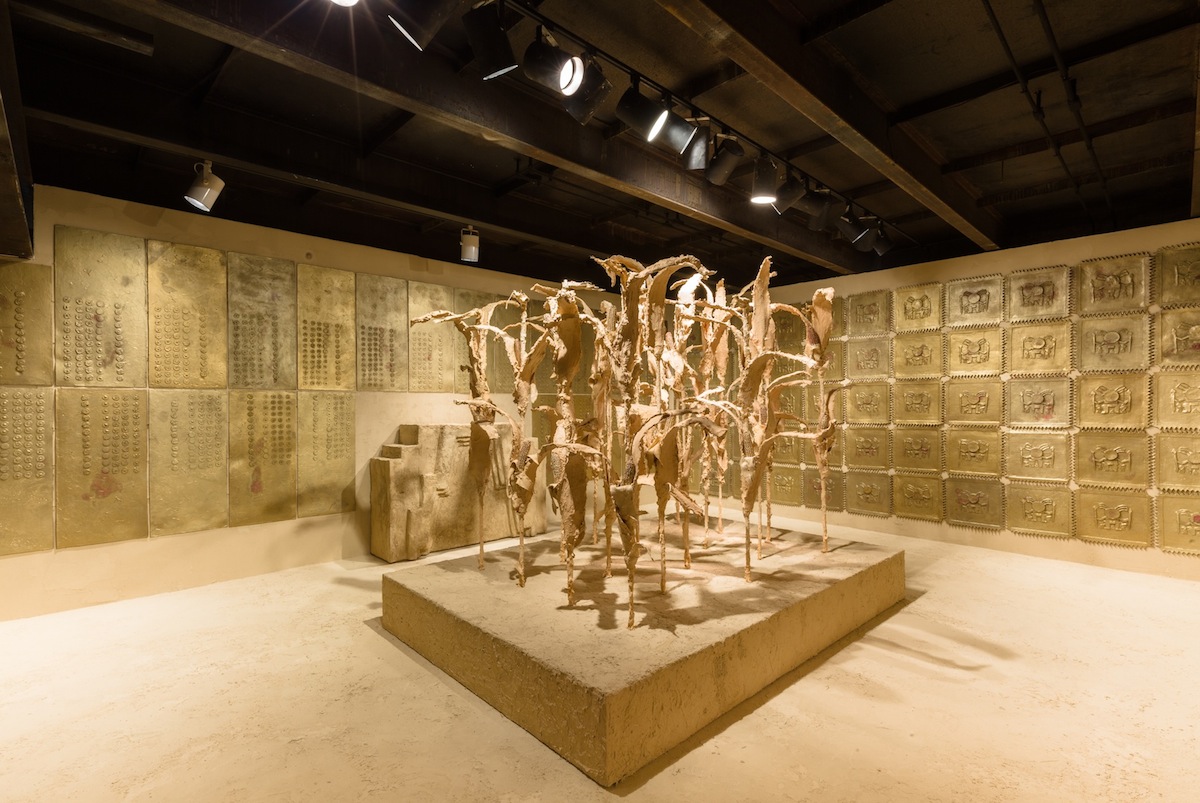Liz Glynn’s Golden Touch
In 1530, the Spanish explorer and conqueror Francisco Pizarro led his fleet across the Atlantic Ocean, traveling thousands of miles and eventually anchoring off the West Coast of South America. This was his third expedition, commissioned based on the conquistador’s hunch that a wealthy empire was hidden in the vast forest. And he was right. In November 1532, two years after docking, Pizarro and his men found the Inca civilization in modern-day Peru, and promptly took their emperor, Atahualpa, hostage. Accurately guessing what his captors were after, Atahualpa offered to fill a room in his palace with gold and silver. It was to be piled up to seven feet, as high as the king could stretch his hand, so the story goes.
Goblets, cups, and other trinkets soon filled the room, gathered from far corners of the empire. This went on for two months. When the ransom was filled, the Spanish took the precious metals and melted them down. Pizarro then had Atahualpa executed on July 25, 1533. The bounty was shipped back to Spain and smelted into local coinage, ingots. As it goes, the Incans were evantually wiped out.
Los Angeles-based artist Liz Glynn stumbled across a mention of the event tucked in a book about the history of gold as a commodity. As an artist whose sculptural installations and performances often explore historical economies, she was intrigued. Her first New York museum show at SculptureCenter re-stages the infamous room. Gold paneling, sculpted from red sculpture wax, and the room’s dimensions, 17 by 22 feet, match recorded descriptions.
But the reproduction doesn’t stop there: from now through July 28, Glynn will enact the story within a modern New York context. This week’s visitors will find billowing corn stalks, made of plaster painted gold, in a neat grid on a raised platform. Starting next week, the stalks will be gone. Slowly, golden objects will accumulate on the platform, delivered by Glynn and SculptureCenter employees.
The artist will be physically casting the items from wax at various places in the five boroughs, including The Kitchen in Manhattan and Pioneer Works and Cabinet in Brooklyn. Substituting wax for gold is effective least of all because melts easily; the wax also functions as an allegory to the history of sculpture vis a vis the lost wax casting technique, a nod to SculptureCenter itself.
The objects’ journey from different boroughs to SculptureCenter in Queens parallels how Incans traveled from far away, ransom in hand, to the palace. “I love the idea of being in New York, with people carrying their crap on the subway,” says Glynn. “I’ll be carrying grocery bags, and various trolleys of stuff, back to the site.”
Having thoroughly researched the story’s surrounding history, Glynn is quick to point out that the Incans didn’t value gold as the Spanish did. “It wasn’t currency for them,” she describes. “[Gold objects] only had use value to the Inca when they were intact… the Spanish didn’t see the value they had to the Inca.” Rather, gold objects to the Incas were more akin today to “all the junk we’re continually throwing out: crap from Ikea, or the dollar store, that you’re bringing back on the subway.”
By the last week of July, she’ll begin to melt down the objects amassed at the installation at SculptureCenter–ransom gold, wall panels and all–in large pot with a burner. She’ll then mold the liquid wax into Spanish ingots. “The pile of ingots will be the piece,” she explains. “And the knowledge that the ingots were this.”
As the project was realized, people suggested to Glynn that she not ultimately dissolve her creation. She refused. “The insistence on melting it down is important to me,” she says. “Just thinking about loss in a broader sense–loss through transformation, I think.”
“LIZ GLYNN: RANSOM ROOM” WILL BE ON VIEW AT SCULPTURECENTER THROUGH JULY 28, 2014.







